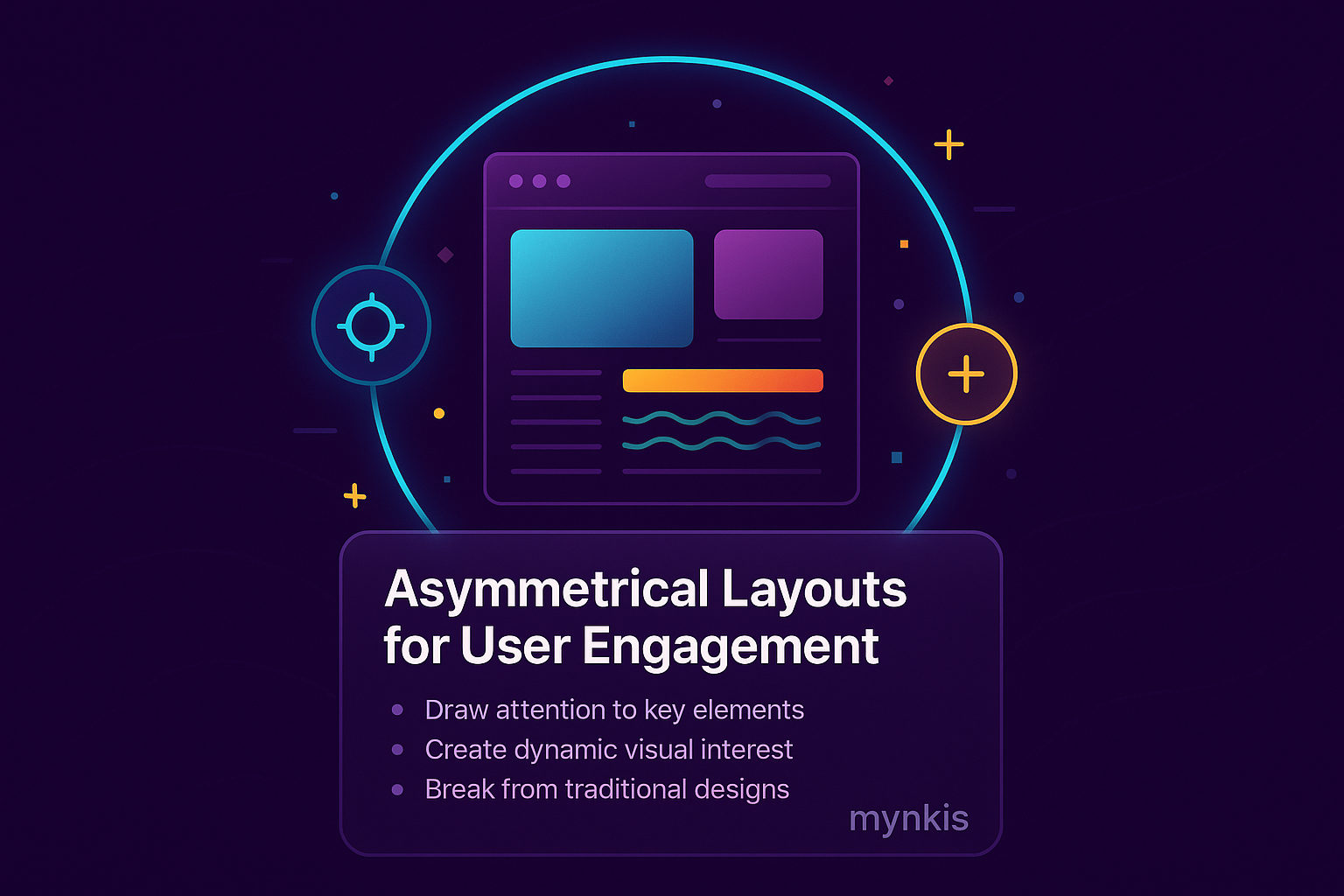Schedule a Demo
When it comes to creating a website that converts, it's easy to get trapped in the familiarity of grid-based designs. Yet, it's in the embrace of the asymmetric that the most innovative and engaging user experiences often emerge. In my work with business owners looking to enhance their online platforms, I've seen firsthand how an asymmetrical layout can make a website stand out in a sea of sameness, driving not just visits, but meaningful conversions.
The power of asymmetry lies in its ability to draw attention and guide the user's eye in a deliberate way. Unlike traditional layouts, where the eye might drift or the content might feel monotonous, an asymmetrical layout plays with space, creating focal points that lead to a more intuitive user journey. Think of it as the art of visual storytelling for your brand, where every element, from images to text blocks, contributes to a narrative that captivates and motivates action.
Breaking away from the grid not only infuses a site with character but can significantly enhance engagement. Users are more likely to remember and interact with a site that feels unique and thoughtfully curated. In my experience, clients who've dared to break the mold have reported higher user engagement rates and better organic search performance. But how does this translate into booking-enabled websites?
For owners requiring booking-enabled websites, the asymmetrical design isn't just a visual flourish; it's a strategic tool. By arranging elements in an unconventional manner, you can prioritize the booking journey, making the call-to-action (CTA) stand out. An asymmetrical layout might feature a large, arresting image that leads directly into the booking button, making it the natural endpoint of the user's visual journey.
An intuitive booking experience, one that feels like a natural progression from the site's design, is crucial for maximizing conversions. With asymmetry, you can design pages where elements related to the booking process - dates, options, contact forms - are visually emphasized and easy to navigate. This approach not only guides the user but also embeds the booking functionality into the very aesthetics of the site, making it feel seamless and integral rather than an afterthought.
Research from the likes of the Nielsen Norman Group shows us that asymmetry can tap into the psychology of surprise and intrigue, keeping users engaged for longer. The unpredictability inherent in asymmetrical designs piques curiosity and can guide user behavior more effectively. When deploying these techniques in a booking context, you're leveraging human nature to focus users' attention on making that crucial next step: the booking.
Maximizing the impact of an asymmetrical layout requires a careful balance of chaos and order. It's not about throwing elements willy-nilly across the page but about crafting a controlled narrative. In my engagements, we've found success in designing around a strong visual hierarchy that still feels unconventional. Use whitespace effectively to ensure the design remains clean, yet surprises the user, and always keep accessibility in mind so every visitor can enjoy and navigate your site.
The art of asymmetrical design meets the science of SEO when considering how these layouts can affect a site's organic search performance. An artfully designed page that excites the user must also be optimized to excel in search engine results pages (SERPs). Pay attention to how content is indexed, ensure that the site remains mobile-friendly, and be ready to adjust your strategies for an asymmetrically laid out site. According to Moz's research, sites with unique designs that still conform to SEO best practices can boost their rankings significantly.
Looking at successful implementations of asymmetrical layouts can inspire and inform future projects. For instance, Airbnb has subtly used asymmetrical design elements to guide users towards bookings, integrating this approach with their famed user-centric ethos. On the other hand, smaller boutique hotels have used bold asymmetry to draw attention and increase direct bookings. Each case illustrates how asymmetry, when done right, directly supports business goals.
To measure the effectiveness of an asymmetrical layout, focus on user behavior metrics like bounce rate, session duration, and most importantly, conversion rate. A/B testing different layout versions can give you empirical data to work with. Tracking tools like Google Analytics can help quantify the impact of your design decisions, and based on available research, individual results may vary, so tailor your approach based on what works best for your audience.
Implementing asymmetrical layouts isn't without challenges. Balancing aesthetics with functionality, ensuring cross-device compatibility, and maintaining a cohesive brand identity all require meticulous planning. Moreover, while these designs can be powerful, they need to be adapted to different business models and user personas. It's a complex dance, but one that can elevate a brand when done with expertise and care.
Asymmetrical layouts represent not just a trend, but the future of web design - one where user experience and conversion-centric strategies lead the charge. By daring to venture outside the box, or in this case, the grid, you position your business at the forefront of innovation. This approach aligns perfectly with the entrepreneurial spirit of looking ahead and standing out.
Ready to dive into the asymmetrical design landscape? Begin with a detailed analysis of your current website's performance. Understand where your users are dropping off or failing to convert. Then sketch out how asymmetry could shift their focus and interactions. Whether it's through bold images or intriguing layout shifts, these small design revolutions can lead to significant business outcomes.
As you consider this journey, remember that the true magic happens at the intersection of aesthetic boldness and strategic functionality. It’s about more than just looking different; it's about creating a website that feels different to interact with and reflects your brand’s unique vision. This approach to asymmetrical design isn't just about breaking the rules but bending them to serve your specific business needs.
